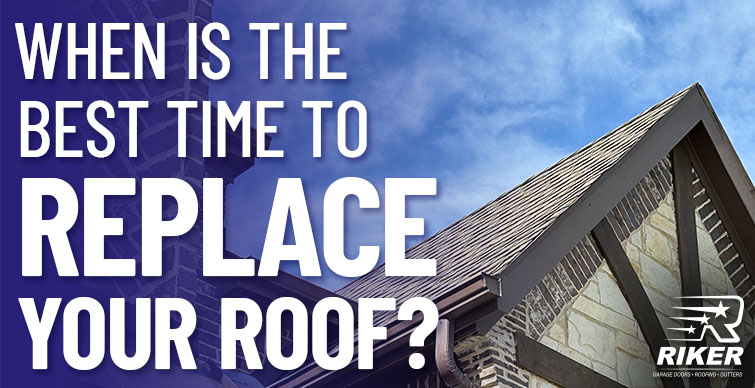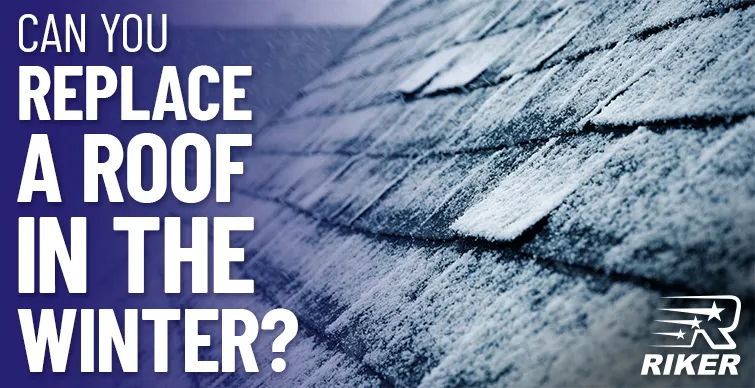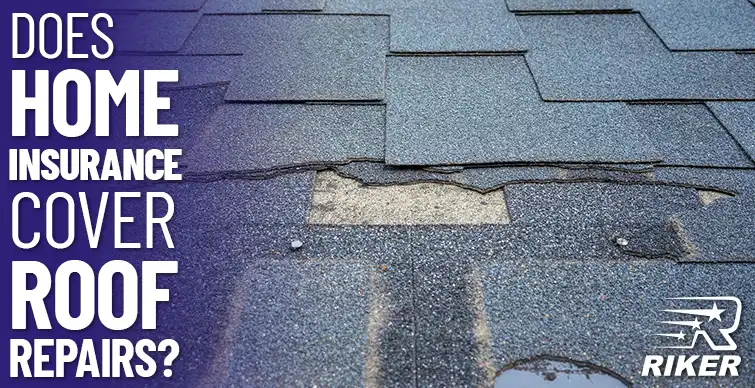
In North Texas, the weather can be quite unpredictable, with really hot summers, random hailstorms, and sudden temperature drops. These conditions can take a toll on your roof and result in wear and tear. Also, extreme weather conditions may cause roof leaks, damaged shingles, and weakened structural integrity. However, many homeowners do not know the signs that it’s time to replace their roof, and usually find themselves asking this vital question – when is the best time to replace a roof?
Furthermore, recognizing the signs and the best time of year to replace a roof is crucial to keep your home safe and comfortable. As such, you need to time your roof replacement to coincide with the most favorable season for efficiency and to help you save costs. In this article, we will examine the common signs that it’s time for a roof replacement. Also, we will enlighten you about the advantages and disadvantages of replacing your roof in each of the four seasons – including Spring, Summer, Fall, and Winter – to help you make informed decisions about your roof replacements.
How to Know When It’s Time to Replace a Roof
Determining the best time to get a roof replaced is essential for maintaining the safety and efficiency of your home. However, several factors can indicate that it’s time for a new roof. These include:
- Age of the roof: The lifespan of roofing materials usually varies. In North Texas, asphalt shingles typically last 20 to 25 years, while metal roofs can last for between 40 and 70 years.
- Visible damage: Look for visible signs of roof damage, like water stains, sagging areas, missing shingles, or signs of rot. These are clear indicators that your roof may need replacing.
- Leaks: If you observe any sign of internal and external leaks, such as water spots on ceilings or damp walls, this indicates that your roof’s integrity has been compromised.
- Increased energy bills: A sudden spike in energy costs can be a sign of poor insulation or roof damage. This can lead to inefficient heating and cooling.
- Granule loss: If you notice granules from shingles accumulating in your gutters, it could show that your shingles are deteriorating and need replacement.
- Moss or algae growth: The presence of moss or algae on your roof can trap moisture and can cause roof damage over time. This is a sign that your roof may need attention.
Spring Roof Replacement
Replacing your roof in the spring can be a strategic choice for many homeowners in North Texas. Here are some pros and cons to consider:
Pros:
- The temperature is moderate, which makes it ideal for workers.
- You will have the opportunity to repair storm damage to your roof very early.
- You can address damage from winter weather early.
- There are longer daylight hours for extended work periods.
- There is the potential for off-season discounts from contractors.
Cons:
- Spring is tornado season in North Texas, which could lead to delays.
- High rainfall and storms can delay roof replacement projects.
- Increased demand for roofing services may lead to scheduling challenges.
- Unpredictable weather patterns can complicate planning for your roof replacement project.
Summer Roof Replacement
Replacing your roof in the summer has its own set of advantages and challenges:
Pros:
- The weather is generally dry, which allows for uninterrupted work.
- Longer daylight hours allow more work to be completed faster.
- This is the peak season, and roofing materials are often available.
- Due to predictable weather, it is easier to schedule your roof replacement project with contractors.
- Quick drying times for adhesives and sealants.
Cons:
- Extreme heat can be challenging for roofing crews and may affect material handling.
- Potential for heat damage to roofing materials if not properly installed by a professional roofing contractor.
- Workers have a higher risk of heat-related illnesses.
- You may experience increased energy costs due to open roof exposure.
Fall Roof Replacements
Considering a roof replacement in the fall can offer several advantages and a few drawbacks:
Pros:
- The weather conditions are cool and dry, which makes them perfect for roof installations.
- There is a reduced chance of severe storms disrupting the roof replacement project.
- After the busy summer season, roof contractors will be more available to handle your work.
- Workers are at a reduced risk of heat-related issues.
- You will have sufficient time to prepare your home for winter.
Cons:
- There might be early cold fronts or unexpected weather changes, although this is unlikely to affect work.
- Shorter daylight hours can limit working time.
- There may be increased demand for contractors as homeowners rush to complete projects before winter.
- Falling leaves can create additional cleanup work.
- Slightly higher costs due to increased demand for roofing materials.
Winter Roof Replacement
Opting for a roof replacement in the winter can be a viable option in North Texas, with several benefits and some drawbacks:
Pros:
- Winters are milder in North Texas compared to other regions, and this makes roof replacement feasible.
- There is generally less rainfall during winter, and this reduces weather-related delays.
- Contractors may offer off-season discounts.
- Lower demand for roof replacement makes it easier to schedule your project.
- Quick turnaround times as crews are less busy.
Cons:
- Occasional ice storms or sudden temperature drops can affect scheduling.
- Cold temperatures may influence the installation of certain materials, like asphalt shingles.
- Shorter daylight hours limit working time.
- Some materials may become brittle and harder to work with in cold weather.
Read more: If you’re not ready for a roof replacement, learn how to prepare your roof for North Texas winters.
When is the Best Time to Replace a Roof?
Many homeowners usually ask what time of year is best to replace a roof. Generally, fall is the best time of the year to replace a roof due to its ideal weather conditions—cool and dry—which are perfect for roof installations. Additionally, there is a lower likelihood of severe storms disrupting the project, and contractors often have more availability after the busy summer season.
However, the best time to replace a roof ultimately depends on your individual needs and circumstances. You should evaluate your specific situation and consult with a professional to determine the optimal timing for your roof replacement project. This will help ensure that your project is done properly and efficiently. With this, you can get reliable and long-lasting protection for your home.
Trust Riker Home Services for Your North Texas Roof Replacement
When it comes to roof replacement in North Texas, trust the highly-skilled experts at Riker Home Services to handle it diligently. We proudly serve the entire region with top-notch roofing services. As a proud member of the North Texas Roofing Contractors Association, we adhere to the highest standards of quality and professionalism.
For more information or to schedule a roof inspection, kindly visit our website or get in touch with us today. Let us help you determine the best time and approach for your roof replacement. We will offer you personalized services that are tailored to your specific needs and circumstances. Above all, our experts will ensure that your home is protected and looking its best.


